
Roots
In the quiet moments of reflection, as we tend to our hair, a subtle yet profound question often arises ❉ what truly shields our delicate strands as we rest or move through our days? It is a query that touches upon the very fiber of care, drawing us into the elemental distinctions between materials. This inquiry, seemingly simple, unveils layers of scientific truth and ancestral wisdom, particularly when considering the whispers of natural silk and the sheen of synthetic satin.
For textured hair, with its unique structure and inherent needs, the choice of protective fabric holds a significance that transcends mere aesthetic preference. It speaks to a deeper understanding of how external forces interact with our hair’s intricate architecture, preserving its vitality and spirit.
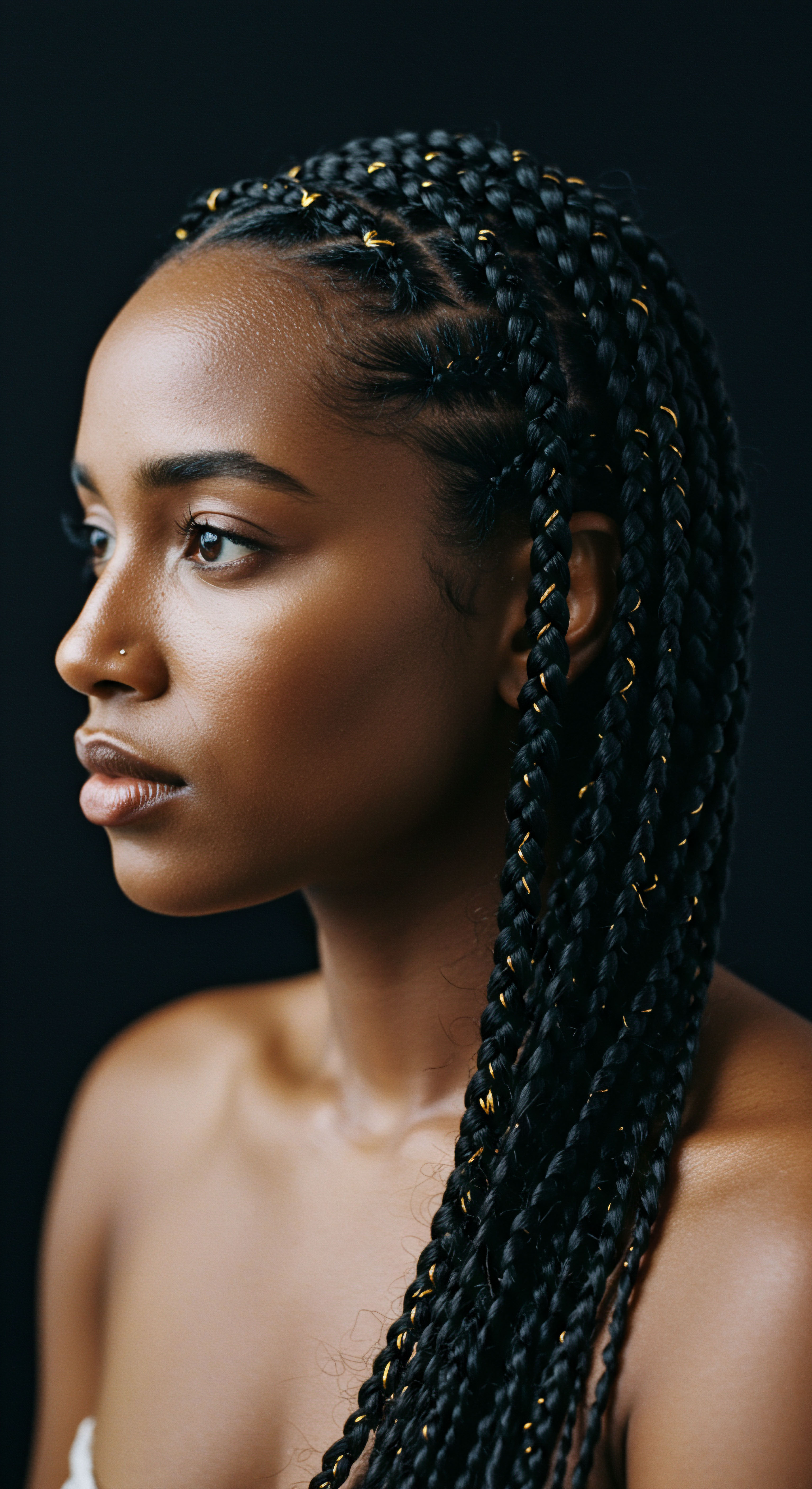
Hair Anatomy and Its Interaction with Fabric
The human hair strand, a marvel of biological engineering, presents a complex surface. Its outermost layer, the cuticle, comprises overlapping scales, much like shingles on a roof. These scales, when healthy, lie flat, creating a smooth surface that reflects light and allows for effortless movement. When hair encounters friction, these scales can lift, chip, or even break, leading to a roughened surface.
This roughened surface, in turn, contributes to frizz, tangling, and ultimately, breakage. The interaction between hair and fabric, particularly during sleep or under head coverings, is a constant dance of contact and movement. The nature of the fabric’s surface, its fiber composition, and its inherent properties dictate the outcome of this dance.
Consider the microscopic landscape of a hair fiber. It is a keratinous filament, possessing a unique structure that determines its strength, elasticity, and how it responds to its environment. When hair is dry, it becomes more susceptible to mechanical damage. The moisture content within the hair fiber influences its flexibility and its ability to resist external stresses.
A material that draws moisture away from the hair, or one that creates high friction, can compromise the hair’s delicate moisture balance, leading to dryness and increased vulnerability. Conversely, a surface that allows hair to glide with minimal resistance helps to maintain the cuticle’s integrity and preserve the hair’s natural hydration.
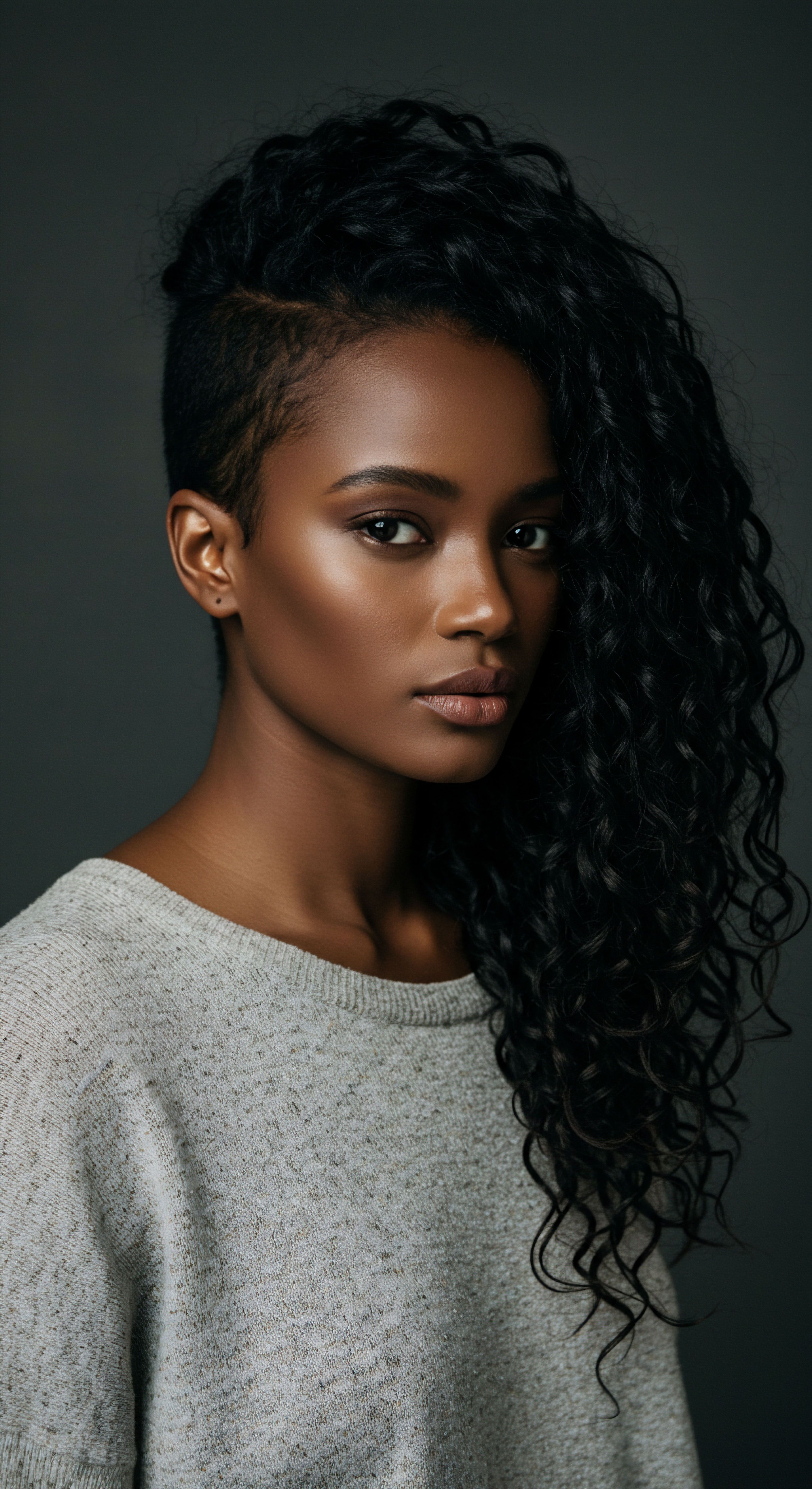
The Foundational Differences of Silk and Satin
At their core, natural silk and synthetic satin represent two distinct worlds of textile creation. Silk, a natural protein fiber, emerges from the diligent work of silkworms, primarily the Mulberry silkworm. Its composition is predominantly fibroin, a protein that lends silk its remarkable smoothness, luster, and inherent strength.
The individual silk fibers are incredibly fine, yet robust, and possess a unique molecular structure that allows them to interact gently with other surfaces. This proteinaceous nature gives silk properties that synthetic materials struggle to replicate.
Synthetic satin, on the other hand, refers to a weave, not a fiber type. While satin can technically be woven from silk, the term “synthetic satin” almost invariably refers to fabrics made from human-made fibers, most commonly polyester or nylon. These fibers are derivatives of petroleum, chemically processed and extruded to create long, continuous filaments.
The satin weave itself creates a smooth, glossy surface by floating the warp yarns over the weft yarns, minimizing visible intersections. This construction contributes to its sleek appearance, but the underlying fiber’s characteristics dictate its true performance for hair protection.
The hair cuticle, with its overlapping scales, directly responds to the surface texture and material properties of fabrics it encounters.
A fundamental distinction lies in their inherent moisture properties. Silk, being a protein fiber, possesses a natural affinity for moisture. It can absorb a certain amount of water vapor without feeling damp, allowing for a balanced environment around the hair. Polyester and nylon, conversely, are largely hydrophobic.
They repel water, which means they do not readily absorb moisture from the hair or the surrounding air. This difference plays a significant role in how each material interacts with hair’s hydration levels.
| Property Fiber Composition |
| Natural Silk (Protein Fiber) Protein (Fibroin) |
| Synthetic Satin (Polyester/Nylon) Synthetic polymers (Polyester, Nylon) |
| Property Surface Texture |
| Natural Silk (Protein Fiber) Naturally smooth, long, continuous fibers |
| Synthetic Satin (Polyester/Nylon) Smooth due to weave; fibers can be coarser |
| Property Moisture Interaction |
| Natural Silk (Protein Fiber) Absorbs moisture, allows breathability |
| Synthetic Satin (Polyester/Nylon) Repels water, less breathable |
| Property Static Generation |
| Natural Silk (Protein Fiber) Low propensity for static electricity |
| Synthetic Satin (Polyester/Nylon) Higher propensity for static electricity |
| Property Thermal Regulation |
| Natural Silk (Protein Fiber) Good insulator, breathable |
| Synthetic Satin (Polyester/Nylon) Can trap heat, less breathable |

Ritual
As our understanding deepens from the foundational elements, we naturally turn our attention to the daily and nightly practices that safeguard our hair. The selection of a fabric for hair protection becomes more than a choice of material; it becomes a ritual, a conscious act of care woven into the fabric of our lives. This segment shifts our focus from the raw science to the lived experience, exploring how natural silk and synthetic satin truly behave in the realm of regular hair care, particularly during those quiet hours of slumber when our hair is most vulnerable to the unseen forces of friction and dehydration.

Nighttime Sanctuary and Hair Protection
The act of preparing for sleep, for many with textured hair, extends beyond simply dimming the lights. It includes the mindful placement of a bonnet or the comforting glide onto a pillowcase, each chosen with the specific intent of preserving delicate coils and curls. During sleep, hair is subject to constant friction as we shift and turn.
This mechanical stress can disrupt the cuticle layer, leading to unwanted frizz, tangles, and even breakage. The choice of material for these sleep accessories therefore becomes paramount, acting as a crucial barrier between hair and potentially damaging surfaces.
Natural silk, with its exceptionally smooth surface, offers a gentle resting place for hair. Its protein structure contributes to a low coefficient of friction when hair slides across it. This translates to minimal snagging and pulling, allowing hair strands to move freely without resistance.
The scales of the hair cuticle remain undisturbed, preserving the hair’s inherent smoothness and reducing the likelihood of frizz upon waking. Moreover, silk’s capacity to regulate moisture means it neither strips the hair of its natural oils nor creates an overly humid environment, striking a balance that supports hair health.
Synthetic satin, while appearing smooth to the touch, often tells a different story under the microscope. Its petroleum-based fibers, though woven into a sleek finish, can still create more friction against hair compared to natural silk. This can result in increased static electricity, especially in dry environments.
The accumulation of static charges causes hair strands to repel each other, leading to that frustrating “flyaway” appearance and increased tangling. While synthetic satin does offer a smoother surface than cotton, its inherent properties do not quite mirror the gentle touch of silk for hair preservation.
Choosing a hair covering material involves a delicate balance between friction reduction, moisture preservation, and thermal regulation.

Why Does Static Electricity Matter for Hair Health?
Static electricity, a common occurrence when synthetic fabrics rub against hair, significantly impacts hair health. When hair gains an electrical charge, individual strands repel each other, leading to a frizzy, unmanageable appearance. This phenomenon, often observed after removing a hat or waking from sleep on a synthetic pillowcase, is more than just an aesthetic concern. The constant repulsion and attraction of charged strands can contribute to mechanical stress, making hair more prone to breakage and difficult to style.
Silk, due to its protein composition and ability to absorb a small amount of moisture, tends to generate significantly less static electricity compared to synthetic satin made from polyester or nylon. This difference means a calmer, smoother morning for those who choose silk for their nighttime rituals.

Maintenance and Longevity of Hair Protection Materials
The practicalities of caring for these materials also influence their long-term efficacy. Natural silk, while delicate, can last for many years with proper care. It typically requires gentle washing, often by hand or on a delicate machine cycle, and air drying. Harsh detergents or high heat can degrade its protein structure over time.
Synthetic satin, often made from polyester, is generally more robust and can withstand more aggressive washing and drying methods. However, its longevity for hair protection hinges on how well its surface integrity holds up to repeated friction and washing, as a roughened synthetic surface will quickly lose its protective benefits. The environmental considerations of production also play a role in a holistic view of longevity. While silk production involves specific animal welfare concerns and can have a significant water footprint in some stages, particularly reeling, synthetic fibers like polyester are derived from non-renewable fossil fuels and contribute to microplastic pollution during washing.
- Natural Silk ❉ Requires gentle hand washing or delicate machine cycles; air drying is recommended to preserve its delicate protein structure and extend its lifespan.
- Synthetic Satin ❉ Often machine washable and more resilient to higher temperatures, offering ease of care but potentially contributing to microplastic shedding over time.
The investment in a hair protective fabric, whether silk or satin, also varies considerably. Natural silk generally carries a higher initial cost due to its complex production process and inherent material value. Synthetic satin is typically more budget-friendly, making it a more accessible option for many. However, considering the long-term benefits to hair health and the potential for greater longevity with proper care, the initial outlay for silk may be seen as a worthwhile investment in hair well-being.

Relay
Having explored the foundational elements and the practical applications of hair protection, we now step into a deeper consideration, where the distinctions between natural silk and synthetic satin reveal themselves with greater complexity. This segment aims to connect the scientific minutiae with broader cultural currents and environmental implications, drawing on research to illuminate the subtle yet profound impact of our choices. Here, we delve into the less apparent intricacies, where material science intersects with personal well-being and global consciousness.
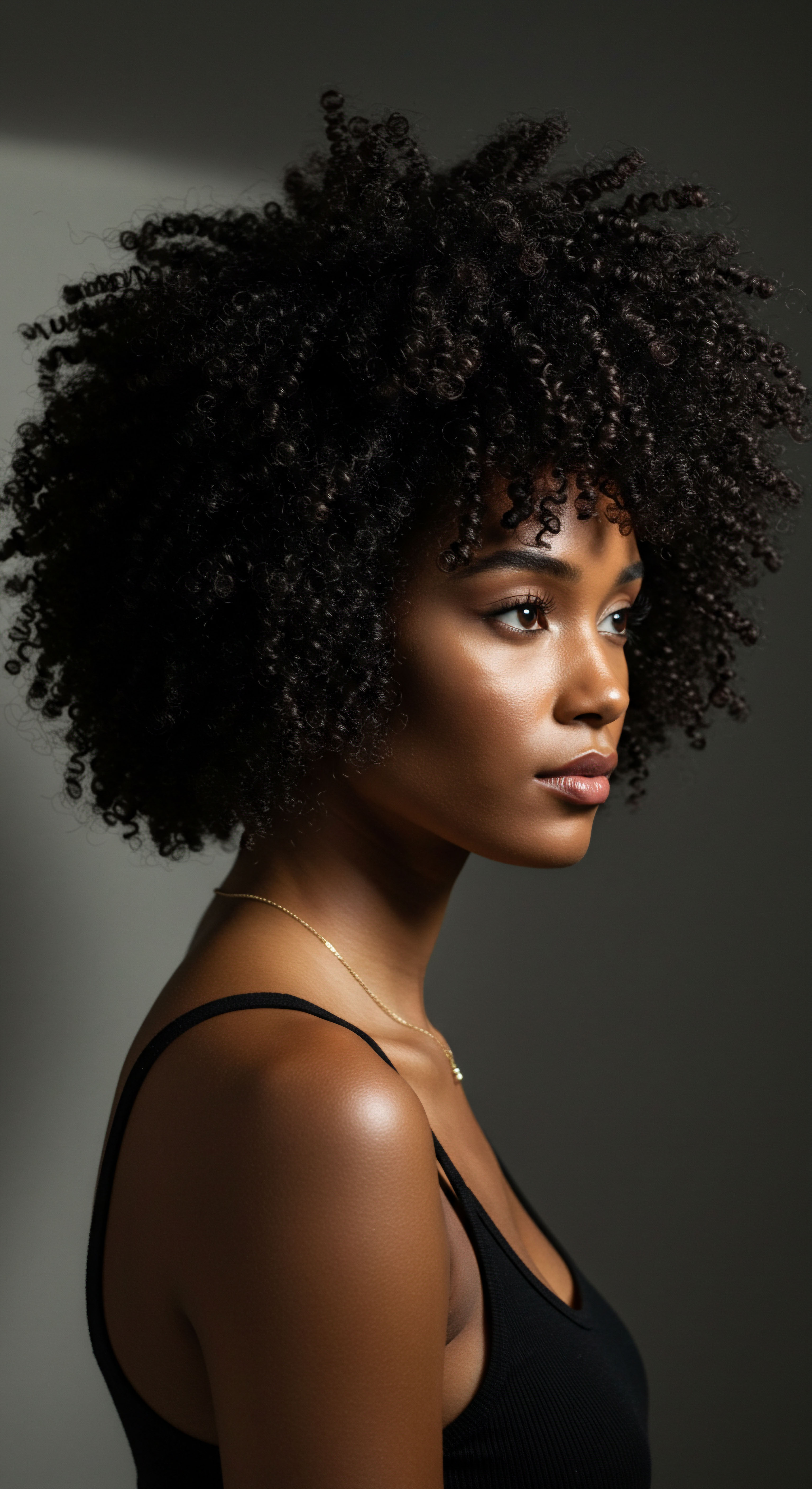
Beyond the Surface How Fabrics Influence Hair Health
The interaction between hair and fabric extends beyond simple friction. It involves a dynamic interplay of moisture exchange, thermal regulation, and electrostatic forces. Hair, particularly textured hair, is susceptible to losing moisture to its surroundings. Fabrics that absorb water readily can draw essential hydration from the hair, leading to dryness and brittleness.
Silk, a protein fiber, exhibits a unique moisture handling capacity. It can absorb moisture without feeling wet, allowing it to wick away excess perspiration from the scalp while still allowing the hair to retain its natural moisture balance. Polyester, the common component of synthetic satin, is hydrophobic, meaning it repels water. While this can seem beneficial for wicking away sweat, it does not allow for the same balanced moisture exchange with the hair, potentially leading to a drier hair environment over time.
The tribological properties of textiles—the study of friction, lubrication, and wear—offer a scientific lens through which to view these interactions. Research has consistently pointed to the lower coefficient of friction of silk compared to many synthetic fibers when interacting with human hair. A study published in Wear by Bhushan, Wei, and Haddad (2005) investigated the friction and wear of human hair and skin. While not directly comparing silk and satin, their work on the tribological properties of hair fibers provides a foundational understanding of how different surfaces impact hair integrity.
Further research, such as that by El-Messiry et al. (2017) on static charge accumulation, specifically links static to increased friction and cuticle damage, particularly in polyester-based textiles.
Consider the coefficient of friction, a measurement of the resistance to motion of one surface sliding over another. A lower coefficient indicates less resistance, meaning less mechanical stress on the hair cuticle. While specific comparative data for human hair against pure silk versus pure polyester satin can vary based on weave, fiber quality, and environmental conditions, general textile science principles indicate that the smooth, continuous protein fibers of silk naturally offer less resistance than the more uniform, often coarser, synthetic filaments of polyester or nylon, even when woven into a satin finish. The structure of the fabric also plays a role; studies suggest that fabric structure has a greater effect on static friction than chemical history, and the nature of the fibers themselves has an even greater effect.
The microscopic world of fiber interaction reveals how silk’s natural protein structure offers a gentle glide, while synthetic counterparts can introduce subtle, yet persistent, mechanical stress.

The Silent Language of Hair Coverings Cultural Echoes and Identity
Beyond the scientific distinctions, the choice of hair protection carries a rich cultural and historical resonance. Hair coverings, whether for practical protection or symbolic expression, have been a part of human tradition across continents and centuries. In many cultures, particularly within Black and multicultural communities, head coverings hold profound significance, representing identity, faith, status, and resilience. From the elaborate geles of Yoruba women in Nigeria to the functional yet symbolic doeks in Southern Africa, head wraps have served multiple purposes, including protecting hair from the elements and signifying social standing.
During periods of enslavement, head coverings were often enforced upon Black women, intended as markers of lower social status. Yet, in an act of powerful resistance, these women transformed these mandated coverings into expressions of beauty, communication, and defiance, using intricate wrapping styles to convey messages and assert their dignity. This history imbues the modern practice of hair protection with a deeper meaning, connecting contemporary choices to a legacy of self-preservation and cultural affirmation.
The choice between natural silk and synthetic satin, in this light, transcends a simple material preference. It can reflect a connection to natural materials, a preference for traditional craftsmanship, or a conscious decision about sustainability. The ritual of covering hair at night, or adorning it with a scarf during the day, becomes a continuity of ancestral practices, a quiet acknowledgment of the enduring bond between hair, identity, and well-being. This connection to hair care rituals can also influence mental health, offering a sense of routine, self-care, and empowerment.
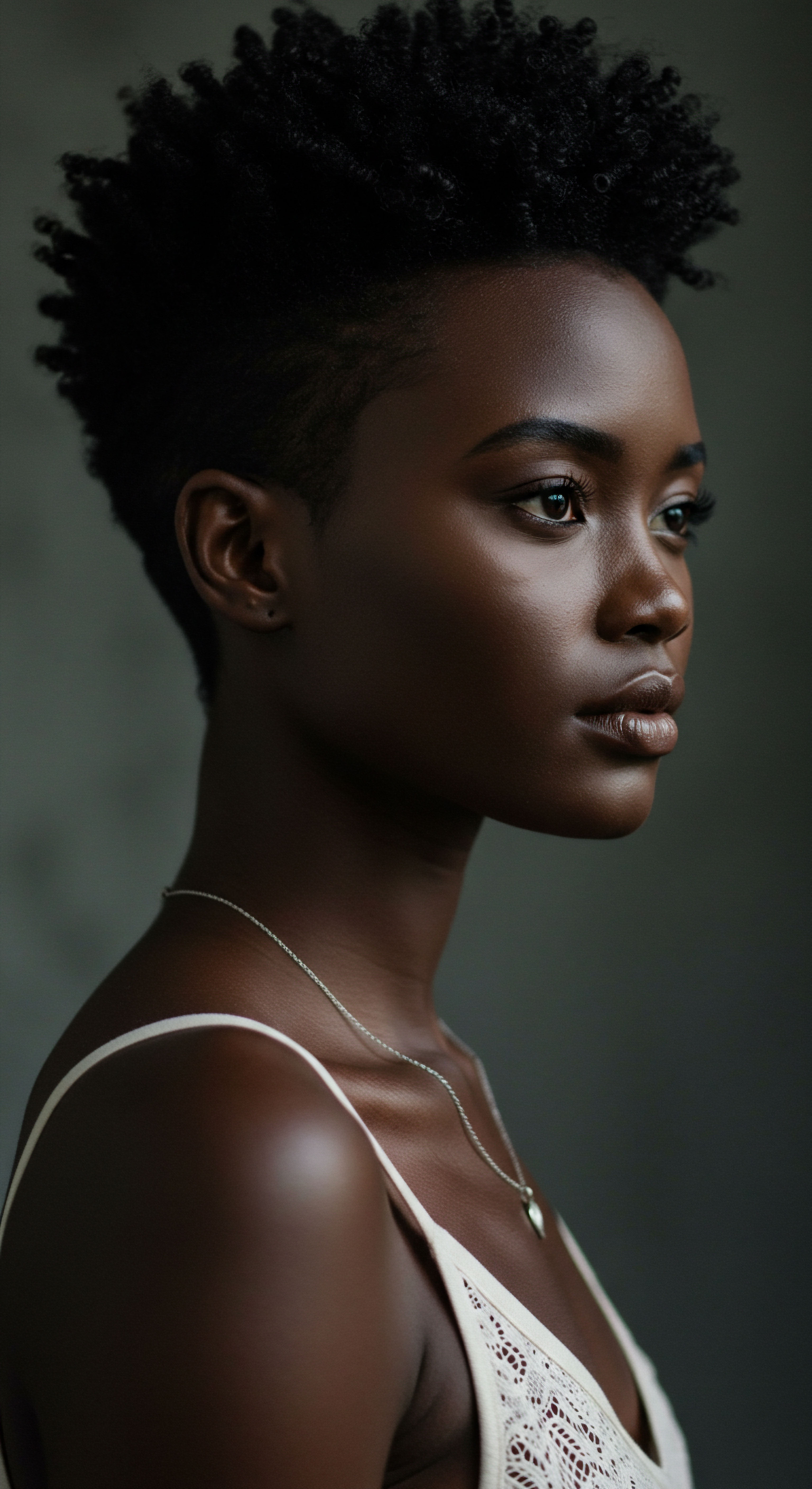
Environmental and Ethical Footprints
A comprehensive understanding of silk and synthetic satin extends to their environmental and ethical implications. Natural silk, while celebrated for its luxurious qualities, is not without its controversies. The production of traditional Mulberry silk involves sericulture, where silkworms are typically killed within their cocoons to prevent damage to the continuous silk filament. This practice raises ethical concerns for some.
Furthermore, conventional silk farming can involve the use of pesticides and fertilizers on mulberry trees, and the processing of silk can be water and energy-intensive, with some studies indicating a significant environmental impact in certain stages, such as reeling. For example, some analyses suggest that producing one kilogram of silk can generate more CO2 equivalent emissions than polyester in certain stages, though overall life cycle assessments vary depending on specific production methods.
Synthetic satins, predominantly polyester, carry their own environmental burden. As a petroleum derivative, their production relies on non-renewable fossil fuels, contributing to greenhouse gas emissions. A major environmental concern associated with polyester is the release of microplastic fibers during washing, which pollute waterways and oceans. Polyester is also not biodegradable, persisting in landfills for hundreds of years.
The table below provides a comparative look at the environmental considerations:
| Aspect Raw Material Source |
| Natural Silk Renewable (Silkworms, Mulberry trees) |
| Synthetic Satin (Polyester) Non-renewable (Petroleum) |
| Aspect Biodegradability |
| Natural Silk Biodegradable |
| Synthetic Satin (Polyester) Non-biodegradable |
| Aspect Microplastic Release |
| Natural Silk Minimal to none |
| Synthetic Satin (Polyester) Significant during washing |
| Aspect Animal Welfare |
| Natural Silk Concerns in traditional sericulture (silkworm death) |
| Synthetic Satin (Polyester) No direct animal involvement |
| Aspect Chemical Use |
| Natural Silk Pesticides/fertilizers in cultivation, processing chemicals |
| Synthetic Satin (Polyester) Chemicals in synthesis and dyeing |
The conscious consumer, seeking to align their choices with their values, faces a complex decision. Some may opt for “peace silk” or “Ahimsa silk,” where silkworms are allowed to complete their metamorphosis, though this silk is often less refined and more costly. Others may prioritize avoiding fossil-fuel-derived materials and microplastic pollution, leaning towards natural fibers. Understanding these multifaceted impacts allows for a more informed and personally aligned choice in hair protection.
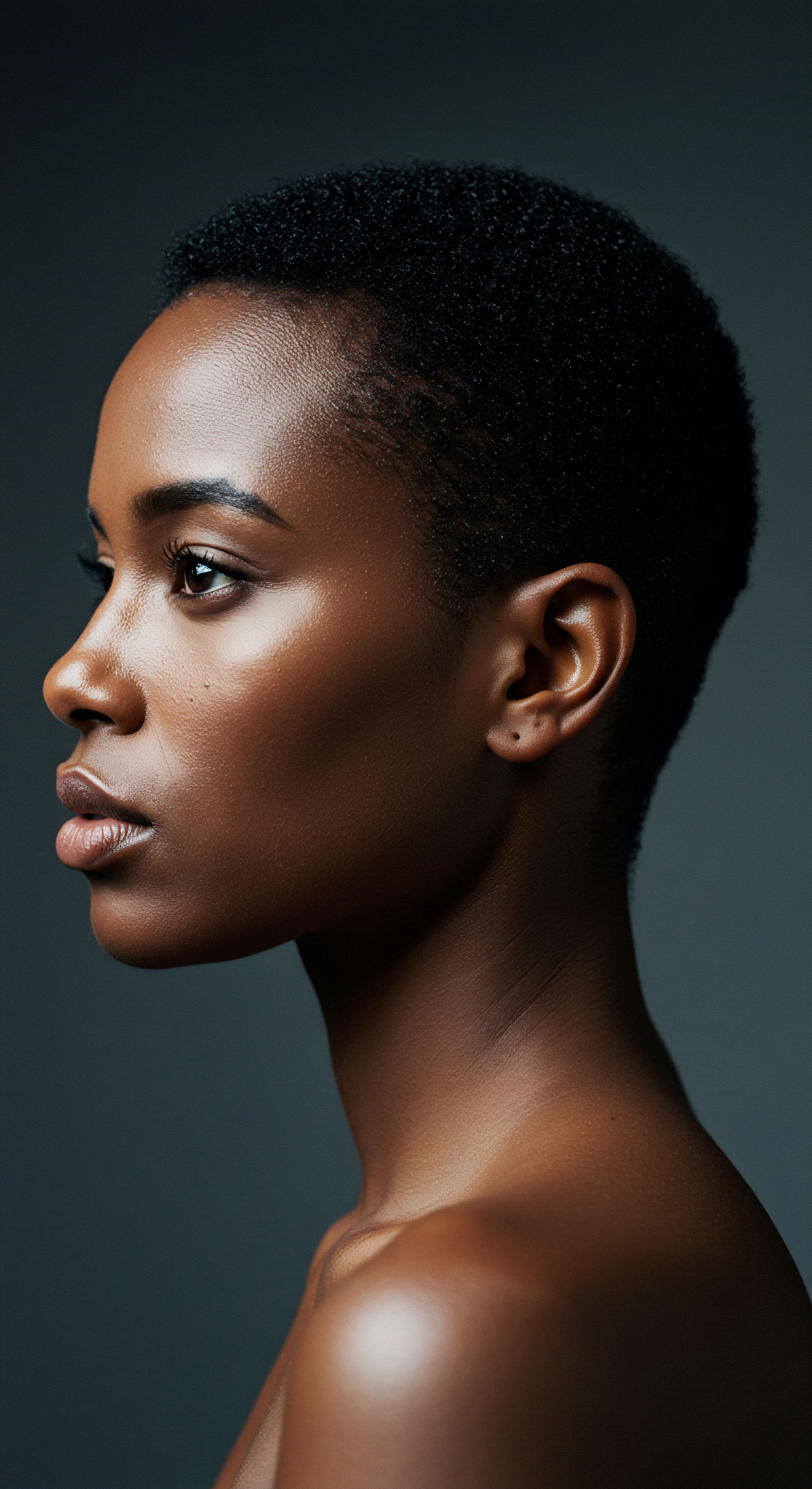
Reflection
As we conclude our exploration into the distinguishing qualities of natural silk and synthetic satin for hair protection, a tapestry of insights unfolds. We have journeyed from the microscopic intricacies of hair and fiber to the broad strokes of cultural significance and environmental impact. The choice between these materials is rarely a simple one, for it is steeped in science, personal experience, and a quiet acknowledgment of our place within a larger ecosystem. The gentle caress of silk, born of a living creature, offers a kinship with natural processes that synthetic satin, a product of human ingenuity, cannot fully replicate.
Yet, both serve a purpose in the ongoing narrative of hair care, each with its own unique story to tell. Ultimately, the path to nurturing our hair, particularly textured hair, is one of mindful consideration, where knowledge illuminates the subtle yet profound differences that shape our daily rituals and contribute to the well-being of our strands, and indeed, our spirit.

References
- Bhushan, B. Wei, G. & Haddad, P. (2005). Friction and wear studies of human hair and skin. Wear, 259(7-12), 1012-1021.
- El-Messiry, M. A. El-Deeb, N. A. & Sharaf, S. (2017). Friction Coefficient and Electric Static Charge of Head Scarf Textiles. EKB Journal Management System .
- Mölders, N. (2023). Inventory of the Thermo-Physiological Behavior of Fabrics—A Review. Journal of Textile Science and Technology, 9(2), 127-150.
- Kumar, V. Kumar, S. & Bhardwaj, N. (2022). Valuating the ecological footprint of sericulture ❉ A comparative analysis with other textile industries. International Journal of Agriculture Extension and Social Development, 2(6), 658-662.
- Mills, C. J. (2025). Mind, Mood & Mane ❉ How Your Hair Impacts Mental Health. Chat Box .
- Rukariro, K. (2015). The history & meaning of head wraps across Africa. Wilderness Safaris .
- Astudillo, A. & Astudillo, L. (2020). Evaluating Environmental Impact of Natural and Synthetic Fibers ❉ A Life Cycle Assessment Approach. MDPI .
- Ghosh, S. & Bandyopadhyay, P. (2021). A study on the functional properties of silk and polyester / lyocell mixed fabric. SciELO .
- Shi, S. Li, Y. Wang, X. & Liu, X. (2022). Repair of damaged hair protein fiber by jointly using transglutaminase and keratin. ScienceAsia, 48(4), 437-444.
- Mallis, A. & Finley, L. (2014). Qualitative Analyses of Textile Damage (Cuts and Tears) Applied to Fabrics Exposed to the Decomposition of Carcasses and Associated Insect Activity in an Austral Summer. MDPI .
- Bhushan, B. & Ma, L. (2014). Friction Dynamics of Straight, Curly, and Wavy Hair. PubMed .